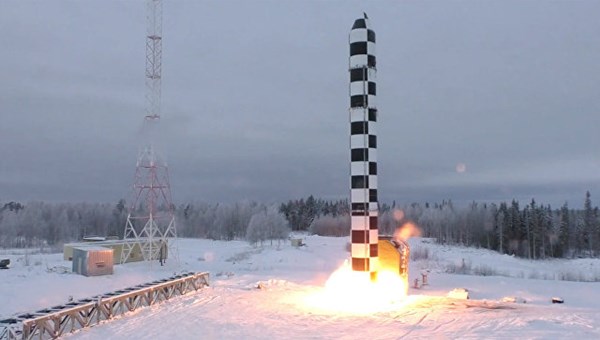Russia brandishes missiles in response to mass expulsion of its diplomats
In response to the West’s unprecedented diplomatic démarche, in which more than 110 Russian diplomats were expelled from EU countries and the US, Russia has begun to work on a large-scale mobilization of its nuclear forces.
At the start of the week, one work day after the eviction of Russian diplomatic staff, Russia’s Strategic Missile Troops (RVSN) began drills involving roughly 10,000 military personnel, 1000 items of military equipment, and more than 30 military units and divisions.
Missile regiments, technical missile bases, as well as supply and protection units have begun the activities to bring the strategic forces to the highest level of combat readiness, according to a report from the Russian Defense Ministry.
The purpose of the drills was reportedly to bring the missile regiments out onto the combat patrol routes, and to rehearse activities relating to a strike, possibly nuclear, from an imaginary enemy. The soldiers worked on aspects relating to “radar, chemical and biological defense”, and also learn how to remove debris and deploy comprehensive water purification stations.
In addition to combat readiness, the “morale and psychological condition of the staff” will also be tested, the Defense Ministry noted.
On Friday, test launches of the new heavy Sarmat-class liquid intercontinental ballistic missiles were conducted at the state Plesetsk Cosmodrome. According to the Russian state arms program, the new missiles are scheduled to begin serial production in 2020 and replace the Voevoda missile.
During the exercise, the Tagil missile unit worked on camouflaging the ground-mobile Yars missile systems, withdrawing units and divisions of the RVSN from strikes, countering modern and future means of air assault, and how to give alerts in collaboration with units of the Central Military District.
The military personnel of the Southern Military District’s missile units practiced firing the Iskander-M systems up to 500 kilometers.
While anti-aircraft systems operators of the Western Military District in the Moscow province learned to destroy high altitude ballistic targets, fighter jets from the Pacific Fleet practiced repelling the air attack of an imaginary enemy in the Arctic.
Roughly 20 Yars ground-mobile missile systems were brought out to field positions in the Sverdlovsk province, and Central Military District anti-aircraft gunners from the Volga region fired shots from Buk-M2 and Tor-M systems in the Astrakhan province.
During the drills, S-400 anti-air missile system crews from the Baltic fleet repelled an imaginary opponent’s airstrike. In the Barents Sea more than 10 ships and submarines from the North Fleet were called out, including strategic nuclear submarines.
Pilots at the Pacific Fleet Naval Airbase in Kamchatka practiced searching for an imaginary enemy’s submarines in the Arctic zone.
Russia has taken a rapid step in the development of new types of strategic weapons, and is prepared to give an “immediate” nuclear response to aggression, Russian President Vladimir Putin told the Federal Assembly in an address on March 1.
Putin noted that according to military doctrine, Moscow can use nuclear weapons not only in the event of a nuclear attack, but also in the event of an attack using any weapon of mass destruction or even normal weapons “if the very existence of the country is threatened”.
